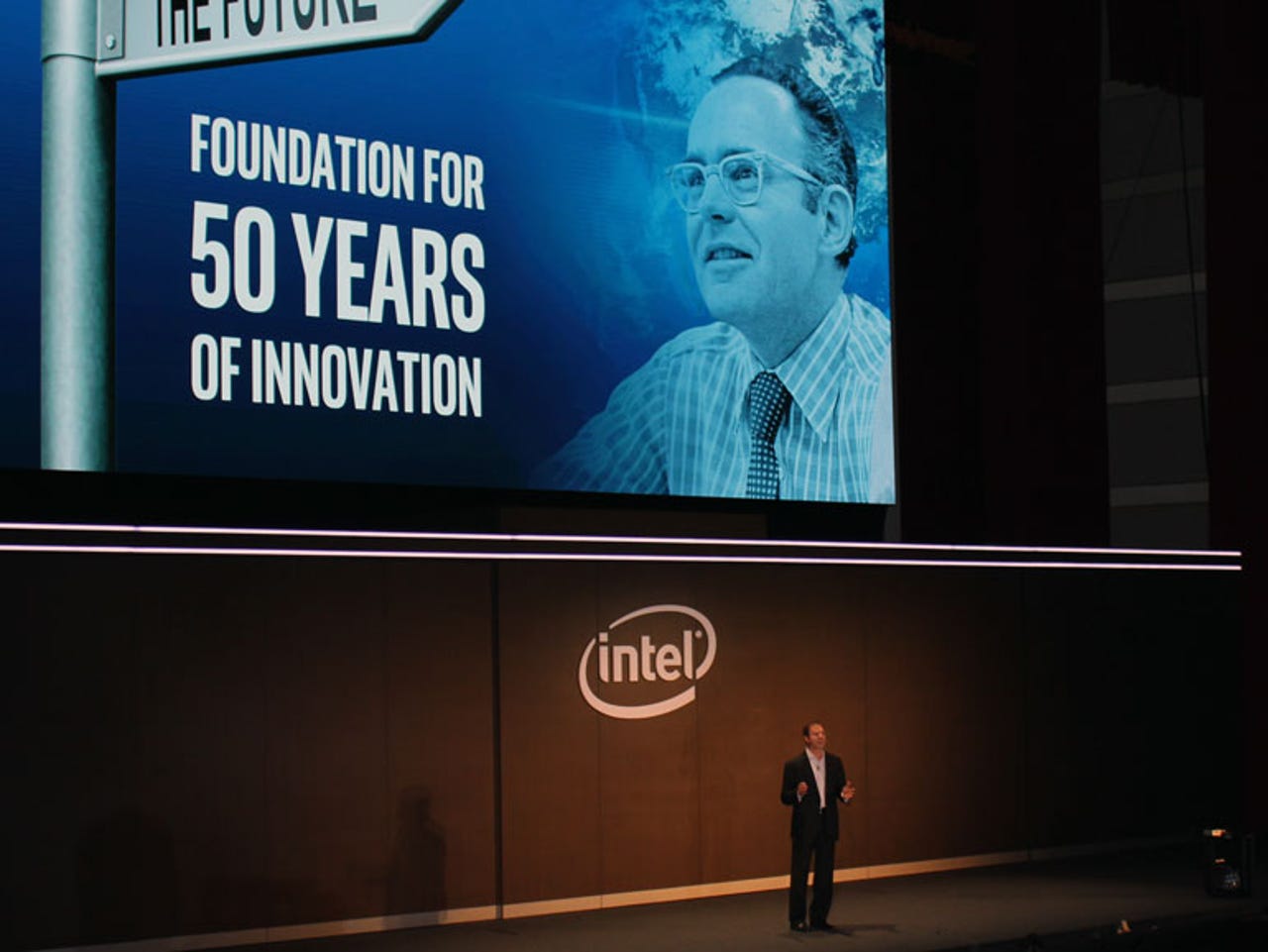Computex 2015: Intel's low-key keynote saves Skylake for later


Intel's annual Computex keynote is meant to set the agenda for the industry. The company discusses new technologies it is bringing to market to an audience that includes many of the companies that turns them into components and finished systems.
This year's show, with Intel's new Skylake microarchitecture and Windows 10 right around the corner, had the potential for some excitement. But it wasn't to be. Intel did announce new versions of its 5th-generation Broadwell processors, as expected, but saved Skylake for later this year. Instead Intel rehashed many of the same ideas--3D cameras, biometrics and wireless computing--it has been discussing for years. These may well transform computing eventually--after all it took Centrino a long time to really catch on--but in the meantime the moribund PC market could rally use some fresh ideas and products.
The most significant announcement was the more powerful Broadwell-H Core processors for desktops and laptops. There are 10 new chips with up to four cores and eight threads, plus integrated Iris Pro graphics with up to 48 execution units and 128MB of embedded DRAM. My colleague, Adrian Kingsley-Hughes, has the details here. The result is significantly better media performance and double the 3D graphics performance compared to the current Core processors with Iris Pro graphics.
These new Broadwell chips are meant to bring better performance to laptops (in particular, Intel showed an Acer and MSI laptops and a Toshiba 2-in-1) as well as desktops such as Mini PCs and all-in-ones. But they don't replace the Core processors in full-fledged gaming PCs. For that Intel is still pushing its 22nm Devil's Canyon Core i7-4790K with a base frequency of 4.0GHz.
The PC gaming business is alive and well with 1.2 billion gamers, the growth of game broadcasting with services such as Twitch, a booming eSports business (including Intel Extreme Masters series) and Windows 10 with DirectX 12 on the horizon. "All of this is generating a lot of excitement around building purpose-built gaming PCs," said Kirk Skaugen, the head of Intel's PC business. Acer's S.T. Liew showed the company's Predator gaming line including a curved 35-inch 4K monitor, G6 desktop, 17-inch notebook and 8-inch gaming tablet using the Atom X7 Cherry Trail processor. All of this sounds good, but for a top-to-bottom refresh of the Core line we'll have to wait for Skylake.
Speaking of Skylake, Skaugen said it will Intel's biggest announcement of the year, but offered no details. He did show two reference designs, the Panther Mountain 2-in-1 and Star Brook all-in-one "tabletop" PC, and said the company was "working closely" with Microsoft on Windows 10.
Intel also announced its first server processor with Iris Pro graphics, the 14nm Xeon E3-1220 v4, targeted at workloads such as video transcoding and high-definition streaming in cloud data centers as well as remote workstation applications. Noting that Intel already has the most comprehensive product line its history from the tiny Curie button chip to Xeons, Skaugen said the company's just-announced $16.7 billion deal to acquire Altera will enable it to develop a new class of products for the data center, where it has already committed to put Xeons and FPGAs together, and to push into new areas such as autonomous driving.
There were a couple of other product announcements, including the Intel Unite software for meetings and a new version of its Thunderbolt I/O that uses the emerging USB Type-C connector. But the bulk of the keynote was a recap of previously announced products and technologies. Skaugen said there are now 80 2-in-1s on the market including thinner designs such as the Lenovo Yoga Pro, Microsoft Surface 3 adding that Intel's research showed people tend to buy new hybrids more frequently than traditional clamshell laptops. He also talked about the rebranded Atom X3 SoFIA and X5 and X7 Cherry Trail processors, announced back at Mobile World Congress, and said there were more than 90 board and system designs based on them including the Asus ZenPad and Transformer Book T100A.
Much of the focus was on what Skaugen called "new user experiences." This is a collection of technologies Intel has been working on for some time. The first is its RealSense 3D camera, which started in PCs and is now working its way down into tablets, such as the Dell Venue 8, and even smaller devices (Skaugen showed a "phablet" reference design). The next was the use of Windows 10's Windows Hello biometric feature and Intel's True Key password manager to eliminate passwords, which Intel said was demonstrated on an early Skylake system for developers.
Finally Skaugen talked about eliminating the remaining wires with WiDi and Pro WiDi wireless display, 802.11ad WiGig wireless docking, and wireless charging with the Alliance for Wireless Power's (A4WP) Rezence magnetic-induction technology. Skaugen announced that the A4WP and Power Matters Alliance have finally completed their merger, announced new partnerships to bring it to market (Basecom, BYD, Foxconn, Haier, Kokuyo, Primax and Targus), and said non-technology like DuPont, Emirates, Hilton and Marriott were now getting involved.
All of this sounds pretty promising, but it did last year as well, and so far progress has been slow. Hopefully the arrival of Skylake and Windows 10 later this year will serve as a catalyst for more innovative systems that deliver these sorts of user experiences.